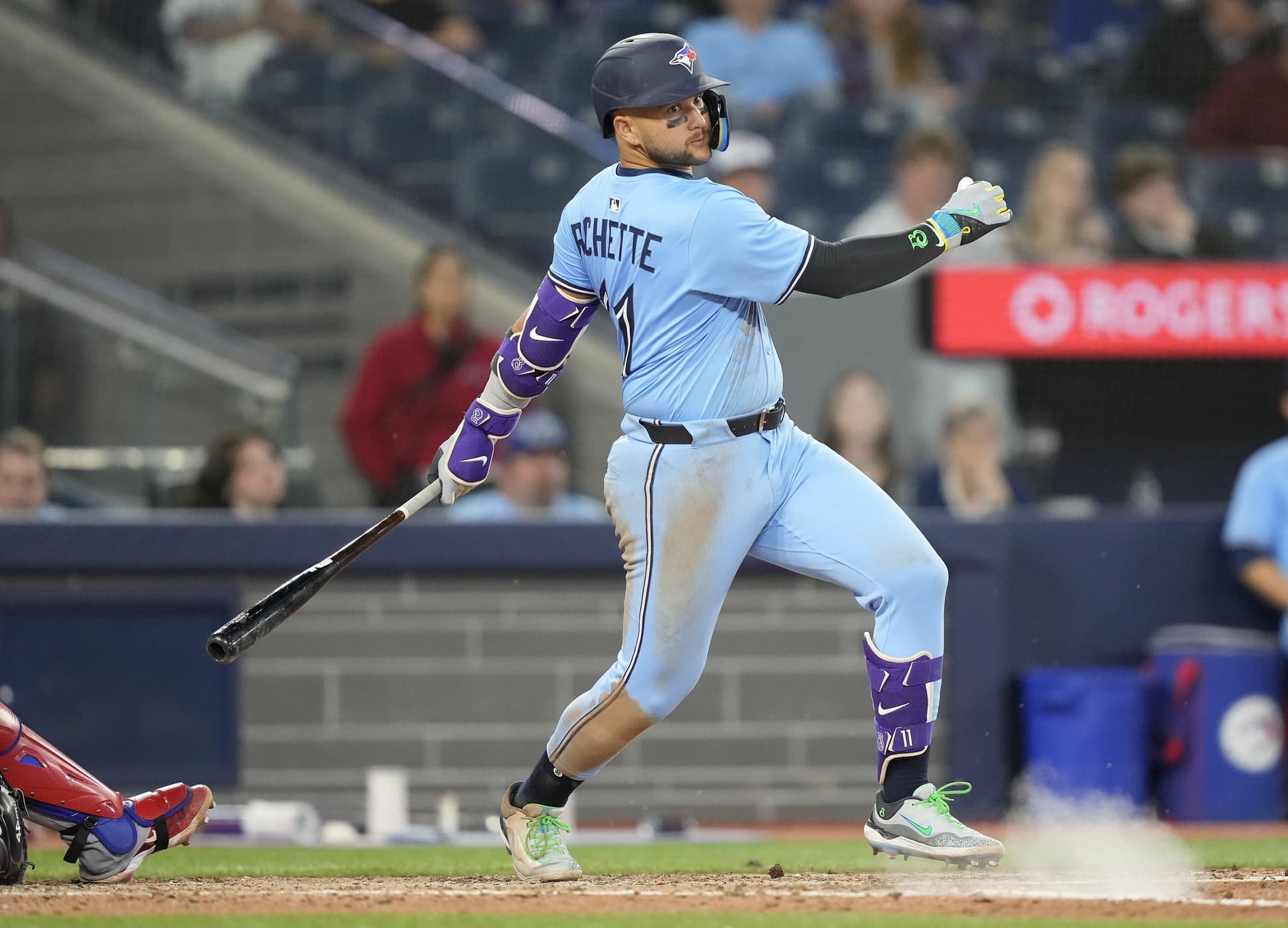Why has Bo Bichette’s extra-base hit power seemingly evaporated?

Photo credit: John E. Sokolowski-Imagn Images
By Ian Hunter
May 28, 2025, 15:00 EDTUpdated: May 28, 2025, 14:16 EDT
If you’re a hitter in the Toronto Blue Jays lineup who isn’t named Daulton Varsho or Addison Barger, chances are you’re not hitting for very much extra-base hit power this season. As a team, their XBH% is 6.8%, 24th in MLB. No Toronto hitters other than Varsho and Barger have an extra-base hit rate of 10% or more.
One of those names included in that crew is Bo Bichette. Coming back after an injury-shortened season, nobody knew what to expect from the Blue Jays’ shortstop in 2025, but his results from spring training painted a promising picture for a bounce-back campaign.
The hits haven’t been a problem for Bichette thus far, but like many of his teammates, the lack of extra-base power has been a bit concerning. A player you could consistently pencil in for 20-plus home runs a season is currently on pace for 12 home runs this season, which is a far departure from the power hitter of a few years ago.
If you envisioned a typical Bichette base hit from this season, you’d probably think of an innocent single up the middle or to the opposite field. He’s not quite Luis Arraez-level of swing at everything and plate coverage, but Bichette traditionally swings at a lot of pitches and doesn’t work deep counts. Some things have definitely changed this year.

Baseball Savant
One red flag that popped up right away was his bat speed. As a player who hovered around the 70 MPH mark, Bichette’s bat speed is down to 68.9 MPH this year. That’s not inherently a bad thing, but it’s interesting to note George Springer’s bat speed is down a few ticks from last year as well.
Is this a David Popkins directive to take something off the swing, or are these guys just swinging softer to sell out for more control? That’s not uncommon in golf to take something off the swing for a more consistent strike, but I’m not sure that translates the same to baseball.
Bat speed is a very in-vogue statistic right now, but that only partially explains why Bichette’s extra-base pop has dissipated.
Aside from that, I was surprised to find that it was the only true indicator of something amiss with Bichette. Many of his other numbers are trending in the right direction. His strikeout rate, chase rate, overall swing percentage and swing and miss rates are all at career lows.
Bichette’s attack angle is up, his barrel rate is up, his average exit velocity is up, and his hard hit rate is up compared to 2024. And yet most of his power numbers have taken a step backward, which is a little mind-boggling. How can a player hit the ball harder and yet his power numbers slide down?
Believe it or not, Bichette is being more selective at the plate in 2025 and seeing deeper counts than he has in a few years. He earned the nickname “Bo and two”, but Bichette has been far less aggressive early in the count this year, and his first pitch swing percentage is down nearly 10% year-over-year and also at a career low of 33.3%.
Season | XBH | Swing% | Whiff% | Chase% |
2022 | 9.80% | 55.90% | 23.00% | 35.20% |
2023 | 8.80% | 56.60% | 21.10% | 36.40% |
2024 | 6.30% | 56.40% | 21.90% | 37.10% |
2025 | 7.80% | 51.40% | 19.20% | 33.60% |
On paper, these are all good things. A traditionally overly aggressive hitter like Bichette has adjusted to become more versatile. He’s seeing more pitches, not jumping on every first pitch, and he’s not chasing bad pitches as much. Sounds like everything you’d want from a prototypical leadoff hitter, right?
In the words of the Kylo Ren meme, the Blue Jays are probably expecting “more”. Bichette’s 101 wRC+ is miles from his peak of 122 to 129 wRC+ range during his 2021 to 2023 seasons. The hits are nice, but I think many people are expecting more pop from Bichette’s bat.
Varsho and Bichette are trending in opposite directions this season. While the Blue Jays centre fielder is selling out power and sacrificing more strikeouts, Bichette is going the other way and trading strikeouts and home runs for singles and doubles.
Perhaps what we’re witnessing this season is the beginning of the evolution of Bichette as a hitter. A few years ago, it felt like the sky was the limit for him at the plate with the potential for a 30-plus home run season on the horizon for the Blue Jays’ shortstop. But that feels further away than ever now.
But if he continues on this track, Bichette may continue to be a high average guy, someone with slightly more on-base skills, and less of a tendency to swing and miss. Will that make him a coveted player on the free agent market this winter, potentially?
If that’s his play, I don’t think Bichette earns as much of a payday as he thinks, but players always have to grow and evolve their game to stay successful in the Major Leagues. This new Bichette can be successful on this track, but with the lack of power throughout this Blue Jays lineup, they’d surely rather have the Bichette of old bring back a few more homers.
Celebrate Vladdy’s big news in style with the exclusive new BlueJaysNation Vladdy merch — available only at NationGear.ca! Rep a future Hall of Famer and wear your team’s pride loud. Limited drop. Don’t miss out.
Breaking News
- Former Blue Jay Jeff Kent elected into Baseball Hall of Fame
- Former Blue Jay Jake Lamb retires
- A healthy Yimi García should be a huge part of the Blue Jays’ bullpen in 2026
- Blue Jays outright Yariel Rodriguez from 40-man roster
- Blue Jays draftee Chase Brunson ranks on MLB Pipeline’s recent top 100 draft list

